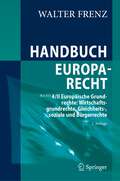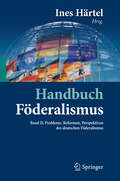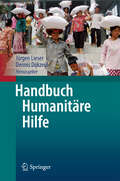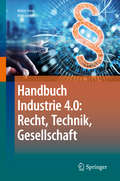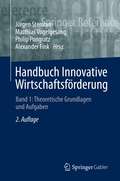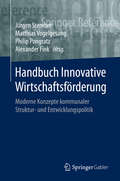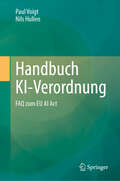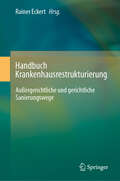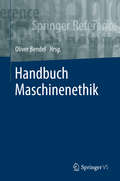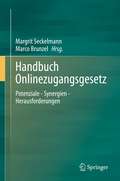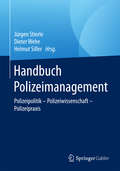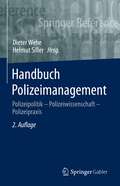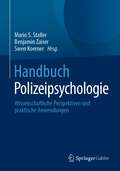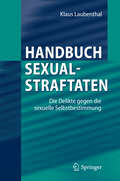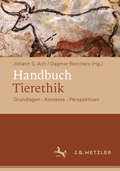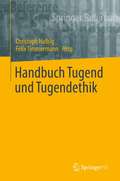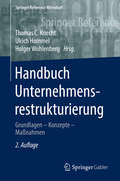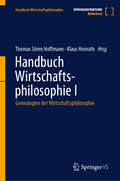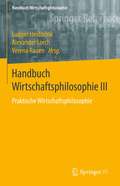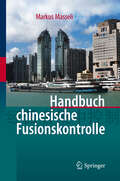- Table View
- List View
Handbuch Europarecht: Band 4/I Europäische Grundrechte: Allgemeine Lehren, personenbezogene und kommunikative Grundrechte, Klimaschutzansprüche
by Walter FrenzDie europäischen Grundrechte haben eine intensive Konjunktur vor allem in den Bereichen Daten- und Klimaschutz. Dort haben sie auch eine wichtige Funktion, um die UN-Ziele für eine nachhaltige Entwicklung zu erreichen, welche Maßnahmen zum Klimaschutz umfassen (SDG 13). Inwieweit bestehen Ansprüche auf Klimaschutz parallel zum BVerfG-Klimabeschluss? Die EGMR-Judikatur wird durchgehend stark einbezogen, ist sie doch vielfach noch immer Leitbild für die Auslegung der EGRC. Das gilt vor allem für die kommunikativen Grundrechte mit dem Dauerkonflikt zwischen Medienberichterstattung und Persönlichkeitsrecht. Insgesamt hat sich die EU-Grundrechtsdogmatik sowohl in der Rechtsprechung als auch in der Literatur erheblich fortentwickelt und wird umfassend kritisch gewürdigt – so zur Zulässigkeit der Vorratsdatenspeicherung. Das gilt auch für die neue Rolle des BVerfG zur Durchsetzung der EU-Grundrechte und für die Flüchtlingsproblematik.
Handbuch Europarecht: Band 4/II Europäische Grundrechte: Wirtschaftsgrundrechte, Gleichheits-, soziale und Bürgerrechte
by Walter FrenzDie europäischen Wirtschaftsgrundrechte wurden stark fortentwickelt, indem der EuGH die immer wieder beklagte grobmaschige Prüfungsdichte deutlich erhöht hat. Daraus ergeben sich wichtige Konsequenzen für die Verwirklichung des Klimaschutzes auf EU-Ebene, die mit dem BVerfG-Klimabeschluss abgeglichen werden. Wie können damit die UN-Ziele für eine nachhaltige Entwicklung erreicht werden, zu denen Maßnahmen zum Klimaschutz gehören (SDG 13)? Insoweit von Bedeutung sind auch die solidarischen Grundrechte vor allem in Gestalt des Umweltschutzes. Die sozialen Grundrechte hatten ihre Bewährungsprobe im Zusammenhang mit Covid 19. Ausführlich behandelt werden auch die Gleichheits- und Bürgerrechte, die justiziellen Rechte unter starkem Rückgriff auf die insoweit vielfältige EGMR-Judikatur, aber auch die jüngere EuGH-Rechtsprechung in Kartellsachen. Insgesamt erfolgt eine nähere Bewertung mit Blick auf die konkreten Konsequenzen.
Handbuch Föderalismus - Föderalismus als demokratische Rechtsordnung und Rechtskultur in Deutschland, Europa und der Welt
by Ines HärtelBand I behandelt die historische Entwicklung, die philosophischen und rechtlichen Grundlagen, die politische Dimension und die ökonomische Grammatik des Föderalismus. Er stellt differenziert Inhalte und Strukturen der bundesstaatlichen Ordnung in Deutschland dar. Zudem zeigt er die Bedeutung von Rechtskultur, Verfassung und Kompetenzverteilung für den Föderalismus auf.
Handbuch Humanitäre Hilfe
by Jürgen Lieser Dennis DijkzeulMenschen, die infolge von Gewaltkonflikten oder Naturkatastrophen in eine humanitäre Notlage geraten sind, benötigen Hilfe. Diese ethische Selbstverständlichkeit hat mit der Gründung des Roten Kreuzes vor mehr als 150 Jahren einen institutionellen Rahmen bekommen. Seitdem ist die humanitäre Hilfe, also das organisierte und professionelle Helfen in humanitären Krisen und Katastrophen, stark gewachsen. Humanitäre Organisationen sind fast weltweit aktiv. In der Praxis erweist sich die humanitäre Hilfe als eine große Herausforderung. Hilfsorganisationen stehen unter einem hohen Erwartungs- und Zeitdruck: Sie sollen schnell, effektiv und reibungslos Hilfe zum Überleben leisten. Die Hilfe soll unparteiisch, neutral und nachhaltig sein und sich allein an den Bedürfnissen der betroffenen Menschen orientieren. Staatliche Geber, private Spender und auch die Hilfeempfänger verlangen Rechenschaft über den sinnvollen Einsatz der Hilfsgelder. Seit Jahren nehmen Naturkatastrophen in Zahl und Umfang zu. Gewaltkonflikte entwickeln sich zu chronischen Krisen mit einer Kriegswirtschaft, die es schwieriger macht, die Betroffenen zu unterstützen. Die Helferinnen und Helfer sehen sich konfrontiert mit zunehmend komplexeren Notlagen, divergierenden Geberinteressen, politischer Einflussnahme und konkurrierenden Hilfsangeboten. Sie geraten zwischen die Fronten und werden Opfer von gewaltsamen Übergriffen. Auch Missbrauch und politische Instrumentalisierung kommen vor. Dieses Buch trägt zu einem besseren Verständnis von humanitären Krisen und ihren Folgen bei. Es zeigt, wie sich die humanitäre Hilfe in einem internationalen System entwickelt hat und wie die verschiedenen Akteure ihre Rolle definieren und ausfüllen. Es zeigt auch, wie schwierig es ist, dem hohen ethischen Anspruch an unparteiische und von politischen Interessen unabhängige Hilfe gerecht zu werden. Die Autorinnen und Autoren - Vertreter von Hilfsorganisationen und Wissenschaft - zeigen aus unterschiedlichen Perspektiven auf, wie humanitäre Hilfe zwischen Anspruch und Wirklichkeit versucht, dem weltweit wachsenden Hilfebedarf gerecht zu werden.
Handbuch Industrie 4.0: Recht, Technik, Gesellschaft
by Walter FrenzDas Handbuch bietet einen Gesamtüberblick über Industrie 4.0 und gibt zugleich Lösungen für wichtige praktische Fragen. Ausgangspunkt ist dabei das Recht mit seinen aktuellen Herausforderungen Zuordnung der Daten (wem gehören sie? Vorgaben der EU?), Datensicherheit, Datenschutz (Europäische Datenschutzgrundverordnung), Cyberangriffe, Wettbewerbsrecht (Zugangsansprüche gegen Monopolisten, zulässiger und verbotener Informationsaustausch, mögliche Kooperationen). Sodann werden Einzelbereiche von Industrie 4.0 (Internet of Production, Maschinenbau, künstliche Intelligenz, Elektromobilität, autonomes Fahren, Verkehr, Medizin, Bauwesen, Energiewirtschaft etc.) in ihren Besonderheiten beleuchtet. Allgemeine Entwicklungen aus dem Management, der digitalen Transformation der Unternehmen und der Arbeitswelt sowie ethische Fragen schließen sich an.
Handbuch Innovative Wirtschaftsförderung: Band 1: Theoretische Grundlagen und Aufgaben
by Matthias Vogelgesang Philip Pongratz Jürgen Stember Alexander FinkDieses Handbuch stellt die zukünftigen Herausforderungen und aktuellen Lösungsansätze in der kommunalen Wirtschaftsförderung aus unterschiedlichsten Perspektiven und fachlichen Disziplinen dar. Damit soll ein besonders praxisorientiertes Forum für innovative und neue Ansätze geschaffen werden, um diese Konzepte, Methoden und Pilotprojekte einerseits der Praxis zur Verfügung zu stellen und andererseits in der Wissenschaft zur Diskussion zu stellen. Dieser Band 1 behandelt die Rahmenbedingungen in denen Wirtschaftsförderung stattfindet, stellt die theoretischen und konzeptionellen Grundlagen und Aufgaben der Wirtschaftsförderung dar und wirft einen Blick in die Nachbardisziplinen der Wirtschaftsförderung. Der separat erhältliche Band 2 beschäftigt sich mit den praktischen Management-Aspekten der Wirtschaftsförderung und innovativen Ansätzen sowie mit dem Standortmanagement und der Entwicklung von Gewerbeflächen.Dieses Publikationsprojekt wird vom Fachbereich Verwaltungswissenschaften der Hochschule Harz mit seinen bundesweit fast 90 vertraglich eingebundenen kommunalen Wirtschaftsförderungen koordiniert. Es ist ein Forum zur Entwicklung innovativer Ansätze in der Wirtschaftsförderung. Das Handbuch richtet sich an Studierende, Wissenschaftlerinnen und Wissenschaftler unterschiedlicher Disziplinen sowie an Expertinnen und Experten aus der Praxis.
Handbuch Innovative Wirtschaftsförderung: Band 2: Innovationen für Management und Standort
by Matthias Vogelgesang Philip Pongratz Jürgen Stember Alexander FinkDieses Handbuch stellt die zukünftigen Herausforderungen und aktuellen Lösungsansätze in der kommunalen Wirtschaftsförderung aus unterschiedlichsten Perspektiven und fachlichen Disziplinen dar. Damit soll ein besonders praxisorientiertes Forum für innovative und neue Ansätze geschaffen werden, um diese Konzepte, Methoden und Pilotprojekte einerseits der Praxis zur Verfügung zu stellen und andererseits in der Wissenschaft zur Diskussion zu stellen. Dieser Band 2 beschäftigt sich mit den praktischen Management-Aspekten der Wirtschaftsförderung und innovativen Ansätzen sowie mit dem Standortmanagement und der Entwicklung von Gewerbeflächen. Der separat erhältliche Band 1 behandelt die Rahmenbedingungen in denen Wirtschaftsförderung stattfindet, stellt die Aufgaben der Wirtschaftsförderung dar und wirft einen Blick in die Nachbardisziplinen der Wirtschaftsförderung.Dieses Publikationsprojekt wird vom Fachbereich Verwaltungswissenschaften der Hochschule Harz mit seinen bundesweit fast 90 vertraglich eingebundenen kommunalen Wirtschaftsförderungen koordiniert. Es ist ein Forum zur Entwicklung innovativer Ansätze in der Wirtschaftsförderung. Das Handbuch richtet sich an Studierende, Wissenschaftlerinnen und Wissenschaftler unterschiedlicher Disziplinen sowie an Expertinnen und Experten aus der Praxis.
Handbuch Innovative Wirtschaftsförderung: Moderne Konzepte kommunaler Struktur- und Entwicklungspolitik
by Matthias Vogelgesang Philip Pongratz Jürgen Stember Alexander FinkDieses Handbuch stellt die aktuellen Herausforderungen und Lösungsansätze in der kommunalen Wirtschaftsförderung aus unterschiedlichsten Perspektiven dar. Damit soll ein Forum für innovative und neue Ansätze geschaffen werden, um diese Konzepte, Methoden und Pilotprojekte in Praxis und Wissenschaft zur Diskussion zu stellen. Inhaltlich und formal wird das Publikationsprojekt an den fachlichen Schwerpunkt „Wirtschaftsförderung“ der Hochschule Harz mit seinem Wirtschaftsförderungslabor und bundesweit mehr als 85 kommunalen Partnern angesiedelt. Das Handbuch richtet sich an Studierende, Wissenschaftlerinnen und Wissenschaftler unterschiedlicher Disziplinen genauso wie an Expertinnen und Experten aus der Praxis.
Handbuch KI-Verordnung: FAQ zum EU AI Act
by Paul Voigt Nils HullenDieses Praxishandbuch bietet eine verständliche und praxisnahe Einführung in die Regulierung von Künstlicher Intelligenz in der EU. Im Q&A-Stil werden praxisrelevante Fragen zur KI-Verordnung aufgegriffen und lösungsorientiert beantwortet. Das Buch richtet sich explizit auch an Nicht-Juristen. Es bietet Hinweise auf bereits existierende Standards, Normen und Frameworks und erklärt deren Relevanz, um frühzeitig die Einhaltung der Anforderungen der KI-Verordnung zu ermöglichen. Die KI-VO regelt umfassend und sektorübergreifend die Anforderungen an KI-Systeme. Sie gilt für große Unternehmen ebenso wie für Startups, für NGOs und für Behörden. Dieses Handbuch orientiert sich in erster Linie an den Bedürfnissen von Unternehmen jeder Größe, die KI-Systeme entwickeln oder nutzen. Schon mit Inkrafttreten der KI-VO im Sommer 2024 stellen sich zahlreiche Fragen bei der Umsetzung ihrer Vorgaben. Ab wann und für welche Arten von KI gilt die KI-VO? Welche Pflichten treffen KI-Systeme und KI-Modelle? Für welche Risikoklassen gibt es besondere Compliance-Anforderungen? Welche Vorgaben müssen erfüllt sein, um KI-Systeme in der EU anbieten zu können? Welche Bußgelder drohen bei Verstößen? Auf diese und viele weitere Fragen bietet das Handbuch zur KI-Verordnung Antworten, um die Anforderungen der KI-Verordnung zu verstehen. Das kompakte Handbuch unterstützt Praktiker mit juristischem, technischem oder Compliance-Hintergrund dabei, KI-Lösungen schon heute rechtssicher umzusetzen.
Handbuch Krankenhausrestrukturierung: Außergerichtliche und gerichtliche Sanierungswege
by Rainer EckertDas Handbuch liefert einen systematischen Überblick und inhaltlichen Tiefgang über die wirtschaftlichen, rechtlichen und tatsächlichen Herausforderungen von Krankenhausrestrukturierungen. Die in der juristischen Literatur bestehenden Lücken werden geschlossen und alle relevanten Umstände umfassend behandelt. Das Werk dient insbesondere der Praxis, ohne aber auf eine wissenschaftliche Aufarbeitung zu verzichten.
Handbuch Maschinenethik (Springer Reference Geisteswissenschaften Ser.)
by Oliver BendelDie Maschinenethik arbeitet mit Künstlicher Intelligenz und Robotik zusammen. Sie bringt maschinelle Moral hervor und untersucht sie. Ausgangspunkt sind teilautonome und autonome Systeme, etwa selbstständig fahrende Autos, Serviceroboter, Kampfroboter und Chatbots. Dieses Handbuch liefert Grundlagen zur Maschinenethik, erkundet Anwendungsgebiete der Disziplin und stellt Prototypen moralischer Maschinen vor. Neben der Maschinenethik kommen Roboterethik und Rechtswissenschaft zu Wort.
Handbuch Nachlassvermögensverwaltung: Band 1
by Jan Roth Daniel WozniakDas Handbuch umfasst alle Facetten der Verwaltung von Vermögensgegenständen, die zu einem Nachlass bzw. einer Erbschaft gehören. Die Beiträge nehmen dabei nicht nur alle rechtlichen Rahmengestaltungen wie etwa die Erbengemeinschaft, Testamentsvollstreckung, Nachlassverwaltung und Nachlasspflegschaft in den Blick, sondern auch Rechte und Pflichten der Verwalter bei Banken, Family Offices, Treuhändern und faktischen Besitzern. Dabei legen die Autoren besonderes Augenmerk auf die Übergänge und Schnittbereiche zwischen diesen unterschiedlichen Rechtsrahmen. Neben den rechtlichen Aspekten der Nachlassvermögensverwaltung findet der Praktiker ausführliche Hinweise zu wirtschaftlichen und unternehmerischen Fragestellungen sowie zu steuerlichen Problemstellungen im Zusammenhang mit der Verwaltung nachlasszugehöriger Vermögensgegenstände und praktische Anleitungen zur Beschränkung der Erbenhaftung. Schließlich enthält das Werk Hinweise und Muster zu vertraglichen Gestaltungen mit bzw. zwischen Nachlassbeteiligten und anderen nachlassspezifischen Aufgabenstellungen.Das Handbuch richtet sich an Banken, Family Offices, Treuhänder, Testamentsvollstrecker, Nachlasspfleger, (Mit-)Erben, Steuerberater, Wirtschaftsprüfer sowie im Erbrecht tätige Rechtsanwälte.Band 1 beschäftigt sich mit:Verwaltung eines Nachlasses durch eine ErbengemeinschaftNachlasstreuhandschaft und NachlassvollmachtVerwaltung von Nachlassvermögen durch Family OfficesErbschaftsbesitzVerwaltung von VorerbschaftsmasseTestamentsvollstreckungStiftung von Todes wegen und Familienstiftung
Handbuch Nachlassvermögensverwaltung: Band 2
by Jan Roth Daniel WozniakDas Handbuch umfasst alle Facetten der Verwaltung von Vermögensgegenständen, die zu einem Nachlass bzw. einer Erbschaft gehören. Die Beiträge nehmen dabei nicht nur alle rechtlichen Rahmengestaltungen wie etwa die Erbengemeinschaft, Testamentsvollstreckung, Nachlassverwaltung und Nachlasspflegschaft in den Blick, sondern auch Rechte und Pflichten der Verwalter bei Banken, Family Offices, Treuhändern und faktischen Besitzern. Dabei legen die Autoren besonderes Augenmerk auf die Übergänge und Schnittbereiche zwischen diesen unterschiedlichen Rechtsrahmen. Neben den rechtlichen Aspekten der Nachlassvermögensverwaltung findet der Praktiker ausführliche Hinweise zu wirtschaftlichen und unternehmerischen Fragestellungen sowie zu steuerlichen Problemstellungen im Zusammenhang mit der Verwaltung nachlasszugehöriger Vermögensgegenstände und praktische Anleitungen zur Beschränkung der Erbenhaftung. Schließlich enthält das Werk Hinweise und Muster zu vertraglichen Gestaltungen mit bzw. zwischen Nachlassbeteiligten und anderen nachlassspezifischen Aufgabenstellungen.Das Handbuch richtet sich an Banken, Family Offices, Treuhänder, Testamentsvollstrecker, Nachlasspfleger, (Mit-)Erben, Steuerberater, Wirtschaftsprüfer sowie im Erbrecht tätige Rechtsanwälte.Band 2 beschäftigt sich mit:Verwaltung des Nachlasses durch Vormund oder BetreuerNachlasspflegschaft und NachlassverwaltungErbmediationFiskuserbschaftVerwaltung und Verwertung des Nachlasses im NachlassinsolvenzverfahrenRechnungslegungs- und Rechenschaftspflichten der Nachlasspfleger und TestamentsvollstreckerDatenschutzrechtliche Bezüge der Nachlassvermögensverwaltung
Handbuch Onlinezugangsgesetz: Potenziale - Synergien - Herausforderungen
by Margrit Seckelmann Marco BrunzelDas Handbuch arbeitet die Anforderungen und Konsequenzen des Gesetzes zur Verbesserung des Onlinezugangs zu Verwaltungsleistungen (Onlinezugangsgesetz - OZG) vom 14.08.2017 auf. Das OZG bildet nach den Vorstellungen von Bund und Ländern die entscheidende rechtliche Grundlage für eine umfassende und weitreichende Digitalisierungsinitiative im Bereich der öffentlichen Verwaltung. Bund und Länder sind auf Basis des OZG verpflichtet, bis zum Jahr 2022 ihre Verwaltungsportale zu einem Portalverbund zu verknüpfen und alle rechtlich und tatsächlich geeigneten Dienstleistungen darüber auch online anzubieten. Diese Bestimmungen enthalten große Sprengkraft.Nach einer Kartierung der rechtlichen Anforderungen und Möglichkeiten im ersten Teil des Buches werden im zweiten Teil die Potenziale und Grenzen der Verwaltungsautomation aus Sicht der Verwaltungsinformatik als dem "Maschinenraum der Verwaltung" aufgezeigt. Im dritten Teil werden die organisatorischen bzw. institutionellen Gestaltungspotenziale näher untersucht. Der vierte Teil widmet sich den neuen Anforderungen an Führung und Ethik im öffentlichen Dienst.
Handbuch Polizeimanagement
by Helmut Siller Jürgen Stierle Dieter WeheDieses fundierte Handbuch liefert in zwei Bänden grundlegende und aktuelle Beiträge namhafter Autorinnen und Autoren aus Politik, Wissenschaft und Praxis. Es trägt damit zu einer weiteren Professionalisierung der Polizei hin zu einem modernen Dienstleistungsunternehmen bei, das die Innere Sicherheit auch in Zeiten großer Herausforderungen gewährleistet und das Vertrauen der Bevölkerung in die Funktions- und Zukunftsfähigkeit der Polizei erhält. In 53 Kapiteln werden politische, normative, strategische und operative Aspekte der Führung und Steuerung der Polizei beleuchtet und konkrete Lösungsansätze für die Polizeipraxis vorgestellt. Das Handbuch richtet sich somit an Führungskräfte in der Polizei, Politiker, Berater, Praktiker und an alle, die an Sicherheitsfragen interessiert sind.
Handbuch Polizeimanagement: Polizeipolitik – Polizeiwissenschaft – Polizeipraxis
by Helmut Siller Dieter WeheDieses umfassende Grundlagenwerk beleuchtet in 97 Beiträgen politische, normative, strategische und operative Aspekte der Führung und Steuerung der Polizei. Neben einer Reflexion von Forschungsergebnissen und Anstößen für die politische Diskussion liefert es konkrete Lösungsansätze für die Polizeipraxis. Das Handbuch richtet sich damit gleichsam an Führungskräfte und Fachverantwortliche in der Polizei sowie an alle an Sicherheitsfragen Interessierte, insbesondere in Politik, Wissenschaft, Beratung, Lehre und Studium. Die vorliegende zweite Auflage erscheint als Referenzhandbuch des Springer Verlages und knüpft an die 2017 herausgegebene und mittlerweile zum Standardwerk zählende 1. Auflage des Handbuchs Polizeimanagement an. Weitgehend neue Beiträge zu bisherigen Themenbereichen und eine Vielzahl neuer Aufsätze aus den Lagefeldern Einsatz, Kriminalität und Verkehr sowie zur Rekrutierung, Studium und Fortbildung, Digitalisierung und Polizeitechnik machen das Werk zu einem unverzichtbaren Bestandteil der Polizeifachliteratur.
Handbuch Polizeipsychologie: Wissenschaftliche Perspektiven und praktische Anwendungen
by Swen Koerner Mario S. Staller Benjamin ZaiserDieses Buch bietet einen umfassenden Überblick über die Themen der Polizeipsychologie. Die wissenschaftliche und die praktische Perspektive bilden dabei den Kern des Werkes. Damit beansprucht das Handbuch das Standardwerk über und für die Polizeipsychologie zu sein. Es richtet sich an praktizierende Psycholog*innen, Polizist*innen und Wissenschaftler*innen und schafft einen praxisnahen und fundierten Zugang zur Polizeipsychologie. Das Buch gibt Psycholog*innen und Polizeipraktiker*innen Anhaltspunkte zur Ausgestaltung der polizeipsychologischen Arbeit sowie zur evidenz-basierten Nutzung polizeipsychologischer Wissensbestände im Berufsalltag.Das Handbuch ist in sechs Teile gegliedert1. Polizeipsychologie im Überblick – historisch und in der Sache2. Menschen im Kontext der polizeilichen Organisation aus dem Blick der Polizeipsychologie3. Psychologie im polizeilichen Gefährdungsmanagement4. Polizeipsychologie im Zusammenhang mit Einsatz, Leistung und mentaler Gesundheit5. Polizeipsychologie im Gegenstandsbereich polizeilicher Vernehmungen und Aussagen6. Wichtige polizeipsychologische Einzelperspektiven im aktuellen gesellschaftlichen KontextJedes Kapitel startet mit einem Abstract und endet mit Ableitungen, Hinweisen und Handlungsempfehlungen am Ende und eignet sich damit auch für die schnelle Lektüre.
Handbuch Sexualstraftaten
by Klaus LaubenthalDas Handbuch behandelt umfassend die Delikte gegen die sexuelle Selbstbestimmung, wie sie im 13. Abschnitt des Strafgesetzbuches normiert sind. Der Autor erläutert die Sexualstraftaten unter Berücksichtigung der Rechtsprechung und anhand zahlreicher Fallbeispiele. Das Nachschlagewerk richtet sich an alle, die in der Rechtspflege tätig sind. Es liefert Argumentations- und Entscheidungshilfen, einschlägige Rechtsprechung sowie Literatur können schnell aufgefunden werden.
Handbuch Sicherheitswirtschaft und Öffentlich-Private Sicherheitskooperation (Sicherheit – interdisziplinäre Perspektiven)
by Rolf Stober Sven Eisenmenger Harald OlschokDieses Handbuch behandelt alle aktuellen Praxisfragen der Sicherheitswirtschaft u.a. aus rechtlicher, betriebswirtschaftlicher und technischer Sicht. Im Fokus des Handbuchs stehen zudem Öffentlich-Private Sicherheitskooperationen, also die Beauftragung der Sicherheitswirtschaft mit Sicherheitsdienstleistungen durch die öffentliche Hand (Luftsicherheitsdienste, ÖPNV-Dienste etc.). Das durchgängig interdisziplinäre Handbuch richtet sich an Praktiker*innen der Sicherheitswirtschaft, der Unternehmenssicherheit und der staatlichen Verwaltung, kann aber auch Forschung und Lehre an Hochschulen als zentrales Nachschlagewerk dienen.
Handbuch Tierethik: Grundlagen – Kontexte – Perspektiven
by Johann S. Ach Dagmar BorchersDas Handbuch führt ein in zentrale Begriffe, Konzeptionen, Themen- und Problemfelder der Tierethik. Neben der Geschichte der Tierethik, relevanten Konzepten und Theorien sowie einer Bandbreite unterschiedlicher Anwendungskontexte findet sich auch eine Darstellung der Tierphilosophie und ihrer wichtigsten Fragestellungen. Das Handbuch will darüber hinaus auch die sich in aktuellen Diskussionen und Kontroversen abzeichnenden Perspektiven der Tierethik umfassend vorstellen. Ziel des Handbuchs ist es, das breite Spektrum inhaltlicher und begrifflicher Aspekte der historischen und gegenwärtigen Tierethik zu reflektieren und einen Einblick in den aktuellen Diskussionsstand zu geben.
Handbuch Tugend und Tugendethik
by Christoph Halbig Felix TimmermannIn der zweiten Hälfte des 20. Jahrhunderts hat die traditionsreiche Tugendethik wieder stark an Bedeutung gewonnen. In diesem Handbuch versammeln sich internationale Experten der Ethik, um die Tugend in ihrem Verhältnis zu anderen Grundbegriffen der Ethik zu beleuchten, ihre Rolle in der Entwicklung des philosophischen Denkens zu darzustellen und die Möglichkeiten für ihre Wiederaneignung in den Diskursen der Moderne auszuloten.
Handbuch Unternehmensrestrukturierung: Grundlagen - Konzepte - Maßnahmen (Springer Reference Wirtschaft Ser.)
by Ulrich Hommel Thomas C. Knecht Holger WohlenbergDas umfassende Handbuch behandelt alle Aspekte einer erfolgreichen Unternehmenssanierung von den Grundlagen bis zur strategischen Umsetzung. Herausgeber und Autoren aus renommierten Unternehmen und aus der Wissenschaft zeigen, wie Unternehmenskrisen überwunden werden und neue Wachstumsimpulse geschaffen werden können. Sie betrachten bisher gültige Vorgehensweisen im Krisenmanagement im Lichte neuer Trends, sodass veränderte und innovative Ansätze zur erfolgreichen Sanierung führen können. Damit schafft das Handbuch eine umfassende, solide und aktuelle Informationsgrundlage für alle, die nachhaltig mit der Unternehmenssanierung befasst sind.
Handbuch Wirtschaftsphilosophie I: Genealogien der Wirtschaftsphilosophie (Handbuch Wirtschaftsphilosophie)
by Thomas Sören Hoffmann Klaus HonrathDer erste Band des Handbuches Wirtschaftsphilosophie soll der Genese wirtschaftsphilosophischer Fragestellungen gewidmet sein. Die Darstellung erfolgt sowohl in historischer wie in kultureller Brechung: Auf die Vorstellung der Reflexion auf das Ökonomische in der Antike, dem Mittelalter und der frühen Neuzeit folgen Längsschnitte zu den wichtigsten wirtschaftsphilosophischen Denkrichtungen und Schulen vor allem in Europa (Wirtschaftsphilosophie in Deutschland, England, Frankreich, Italien, Nordamerika).
Handbuch Wirtschaftsphilosophie III: Praktische Wirtschaftsphilosophie (Handbuch Wirtschaftsphilosophie)
by Ludger Heidbrink Alexander Lorch Verena RauenDas Ziel des Bandes besteht darin, einen Überblick über die Grundfragen, Kernthemen und Handlungsfelder der praktischen Wirtschaftsphilosophie zu geben. Zu diesem Zweck befasst sich Teil I einführend mit dem Verhältnis von Ökonomie und Ethik, der Verbindung zwischen Wirtschaft, Gesellschaft und Politik sowie dem Zusammenhang von Globalisierung, Transnationalisierung und Interkulturalität. Teil II setzt sich mit den Kernthemen der praktischen Wirtschaftsphilosophie auseinander. Es werden Begriffe und Themen vorgestellt, die sowohl für die ökonomische Wissenschaft als auch für die Realökonomie relevant sind. Hierzu zählen systematische und normative Begriffe wie Präferenzen, Rationalität oder Regeln, Grundlagenthemen wie Freiheit, Verantwortung oder Gerechtigkeit und operative Themenfelder wie Handel, Markt, Kooperation oder Digitalisierung. Teil III beschäftigt sich abschließend aus wirtschaftsphilosophischer Perspektive mit zentralen Praxisfeldern der Ökonomie. Dazu gehören das Verhältnis von Unternehmens- und Konsumentenverantwortung, die Rolle von Stakeholder-Beziehungen, Shared Value-Ansätze, die Verbindung von Governance und Institutionen sowie alternative Wirtschaftsformen und die Wirtschaftspolitik.Das Handbuch Wirtschaftsphilosophie verbindet in interdisziplinärer Perspektive philosophische Grundlagenreflexion mit theoretischer und praktischer Erschließung des ökonomischen Handelns. Methodisch werden dabei wissenschaftstheoretische, normative, kulturbezogene und historische Aspekte miteinander verbunden.
Handbuch chinesische Fusionskontrolle
by Markus Masseli, Dipl.-Kfm., LL.M.eurDas Handbuch ermöglicht eine Risikoeinschätzung geplanter Fusionen und dient als Argumentationshilfe und Anleitung für Fusionskontrollverfahren in China. Es orientiert sich an den für die Praxis maßgeblichen Gesichtspunkten und geht dabei auf die chinesische Fallpraxis und die Diskussion in der chinesischen Rechtsliteratur ein. Berücksichtigung finden auch die politischen und kulturellen Besonderheiten Chinas. Der Anhang enthält Übersetzungen der wichtigsten Rechtsvorschriften, juristischer Entscheidungen sowie Formulare.

